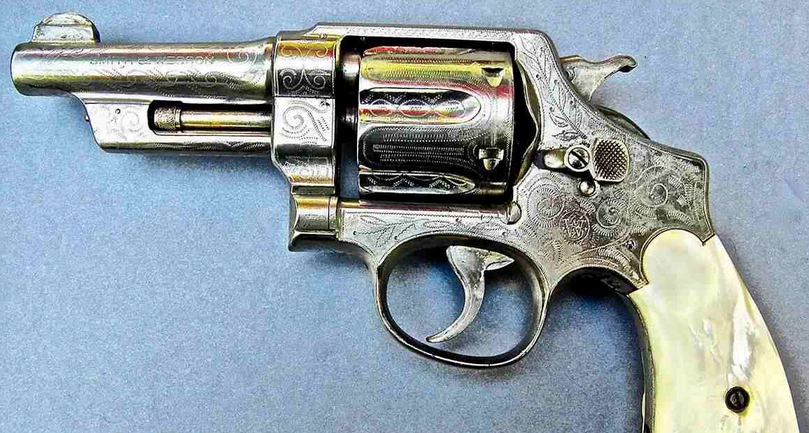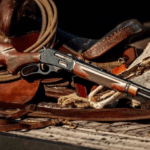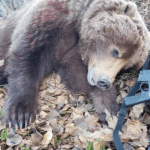
When I started collecting handguns, as opposed to just accumulating the firearms I carried or with which I went shooting, I decided to try to find examples of the guns I would have bought had I been around in the days before World War II. Don’t misunderstand; I have lots of modern handguns, rifles, and shotguns that I admire every time I take them out of the safe. For example, anyone who’s been reading my scribbling for a while knows my affection for SIG P210 autos, Browning High-Power autos, and Manurhin MR73 revolvers. But, those aren’t the ones I would have bought HAD I been around when they were new; they are the ones I did buy in my own time.

In some cases, I’ve bought the earlier versions of guns that are still around. For example, years ago, I had a chance to buy a used, but not abused, Belgian P35 that had been one of the original pre-WWII, military issued pistols. It is now in my safe with my High-Powers. I’ve been a fan of post-WWII S&W N-frame revolvers, especially the .41 Magnums, since I bought my first Highway Patrolman. But reading Elmer Keith’s Sixguns at least a dozen times also made me want a .44 Special S&W Triple Lock and a .44 Special Third Model (i.e., M1926) Hand Ejector. In both cases, I found refinished ones at first and later when I could afford them bought nicer examples.

One gun eluded me though. I grew up watching the westerns of the 1950s and 1960s so had predilection for Colt SAA revolvers. I had a couple of toy ones as a kid, but as an adult, I was mostly a double action revolver guy. There were exceptions. I liked Colt’s New Frontier revolvers, the modern incarnation of the pre-WWII Colt Flat Top Target. Converted by all those hours reading Sixguns, I normally bought them in .44 Special. Having started collecting British guns when I came back from living in the UK, I also traded for a cased Colt SAA in .450 Eley that went to Britain, probably for use by a British officer.

But always lurking was my desire for a Colt SAA like Elmer Keith would have had: a 1st Generation example in .44 Special. In particular, I wanted one with a 4¾-inch barrel. As I learned, after searching for years in vain, there were only 506 Colt SAA revolvers produced in .44 Special. That makes sense. The .44 Special was a Smith & Wesson caliber while .45 Colt and .44-40 were the normal calibers for a Colt SAA. Scarce calibers generally increase the value of a Colt Single Action—the scarcer, the pricier. I did occasionally see a .44 Special SAA sell in one of the big firearms auctions, but it was out of my price range. I also learned that there were Colt SAAs marked “.44 Russian,” some marked “.44 Russian and S&W Special,” and some marked “.44 S&W Special.” The latter two would both chamber .44 S&W Special. I’ll come back to these variations later.

I found a few 1st Generation Colt SAA .44 Special revolvers for sale over the last 30 years, but in each case the revolver was priced out of my range, did not have a 4¾-inch barrel, or both. .44 Special SAAs with 5½-inch barrels seemed to predominate. By three or four years ago, I had pretty much given up my search. I had my New Frontier in .44 Special to shoot, with the bonus of its adjustable sights. I had .44 Special S&W revolvers I shot all of the time. Then, one day, a friend of mine who haunts relatively obscure firearms auctions and attends gun shows every weekend called and said, “I have a 1st Generation Colt Single Action that might interest you.” I’d had those calls before, so I didn’t exactly ooze enthusiasm when I asked, “What is it?” When he replied, “a 4¾-inch .44 Special,” my ears did perk up more than my dog’s do at the word, “cookie.”

Next, I asked the price, which was about right for a 1st Generation SAA in 75–80% condition if it were a .45 Colt or .44-40. I told him I’d like to see it, which resulted in him coming by the next day. As many 1st Generation SAAs had been converted to the .44 Special, I first got out my reference books and examined the revolver with a magnifying glass. All indications were that it had indeed left the factory as a 4¾-inch .44 Special. Still, there was no factory letter, so it was a bit of a gamble. We agreed on a price, and I finally owned my 1st Generation .44 Special. Wait time on a Colt SAA factory letter is a few months so I stuck the Colt in the safe and waited. I’m happy to say the wait was worthwhile as the letter confirmed that the revolver was just as it had left the factory in 1927 on its way to upstate New York.


